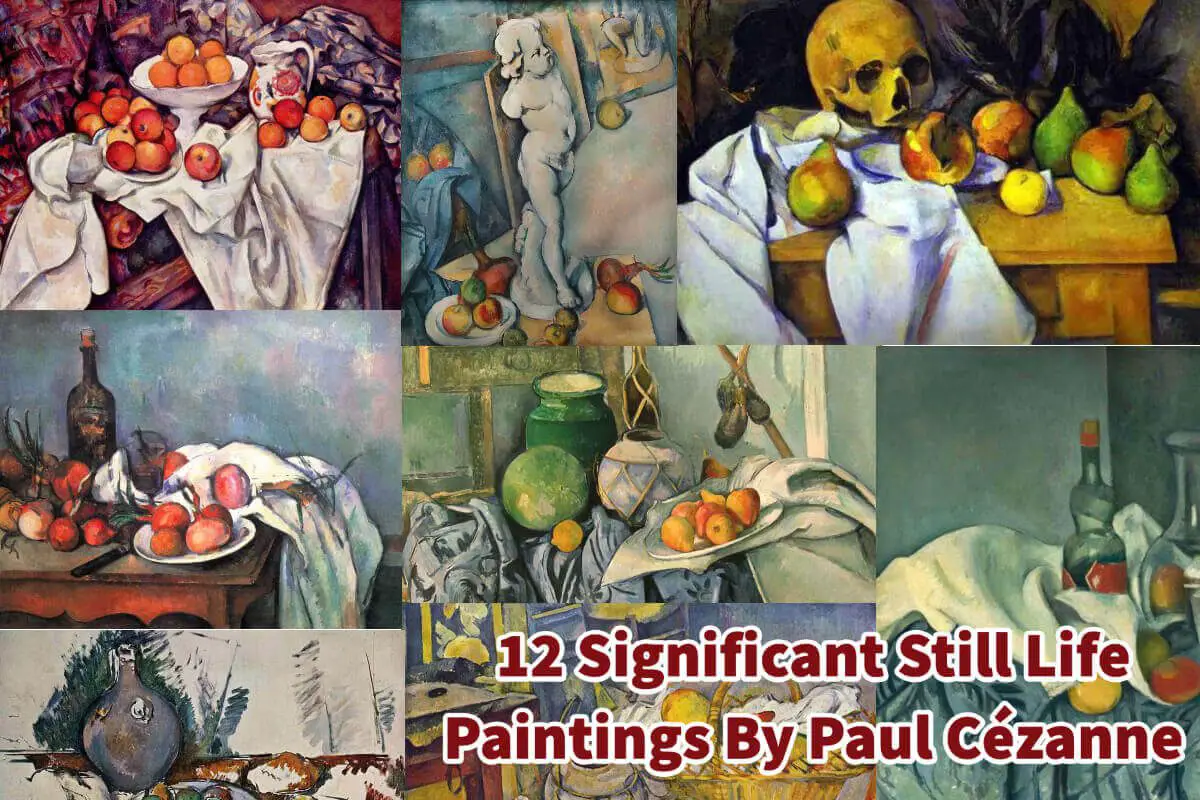Paul Cézanne, frequently hailed as the ‘Pioneer of Modern Art,’ stands as a monumental figure in the post-Impressionist movement. While his portfolio boasts landscapes, portraits, and snapshots of daily life, his still-life paintings truly command attention within his body of work.
Far from mere representations of objects, these works dive deep into the intricacies of shape, hue, and the fundamental nature of visual understanding. They are Paul Cezanne’s still lives that helped to ensure his legacy in art. Read on as we explore Cézanne’s deep-seated fascination with still life and highlight some of his iconic creations in this category.
Table of Contents
- Paul Cézanne And The Allure Of Still Life Paintings
- 12 Significant Still Life Paintings By Paul Cezanne
- Still Life with Apples (1895-1898)
- The Basket of Apples (1895)
- The Peppermint Bottle (1893-1895)
- Apples and Oranges (1895-1900)
- Still Life with Red Onions (1895-1900)
- Still Life with Water Jug (1892-1893)
- Still Life with Skull (1895-1900)
- Curtain, Jug, and Fruit (1894)
- The Plate of Apples (1877)
- Still Life with Plaster Cupid (1894)
- Still Life with a Ginger Jar and Eggplants (1890 – 1894)
- Still Life with Fruit Basket (1888-1890)
- Frequently Asked Questions
- Related Questions
Paul Cézanne And The Allure Of Still Life Paintings
Paul Cézanne, often dubbed the ‘Father of Modern Art,’ holds an unparalleled legacy in post-Impressionism. Although he painted landscapes, portraits, and various scenes of everyday life, his still-life paintings hold an exceptional place in his oeuvre.
These paintings aren’t just simple depictions of objects; they’re intense explorations into form, color, and the essence of perception. Let’s delve into why Cézanne was so captivated by still life paintings and some of his masterpieces in this genre.
Why Did Cézanne Paint Still Life?
One could argue that Cézanne’s inclination towards still life was an intellectual and aesthetic choice. He was fascinated by the idea of reducing objects to their essential forms. Still-life paintings offered him a controlled environment where he could freely dissect, analyze, and reconstruct forms using color and brush strokes.
Unlike landscapes or portraits, objects in a still-life setup don’t move. This static nature allowed Cézanne the time and freedom to explore and experiment.
The beauty of Cézanne’s still life is the presence of tension. Objects seem to both recede and protrude from the canvas, playing a visual game of push and pull. This is a testament to his depth, perspective, and form exploration.
12 Significant Still Life Paintings By Paul Cezanne
While Paul Cézanne’s name is etched in art history for various styles and subjects, it’s undeniable that his still-life paintings occupy a unique space in his artistic journey. The way he brought ordinary objects to life, rendering them in a revolutionary style and rooted in tradition, is a testament to his genius.
Certain pieces stand out among the many still lifes he painted, illuminating the depth and breadth of his exploration in this genre.
Here are 12 of his most significant still-life paintings:
Still Life with Apples (1895-1898)

One of his many apple-themed artworks, this painting captures a medley of apples, each painted with varying degrees of color intensity, suggesting depth and form.
The Basket of Apples (1895)
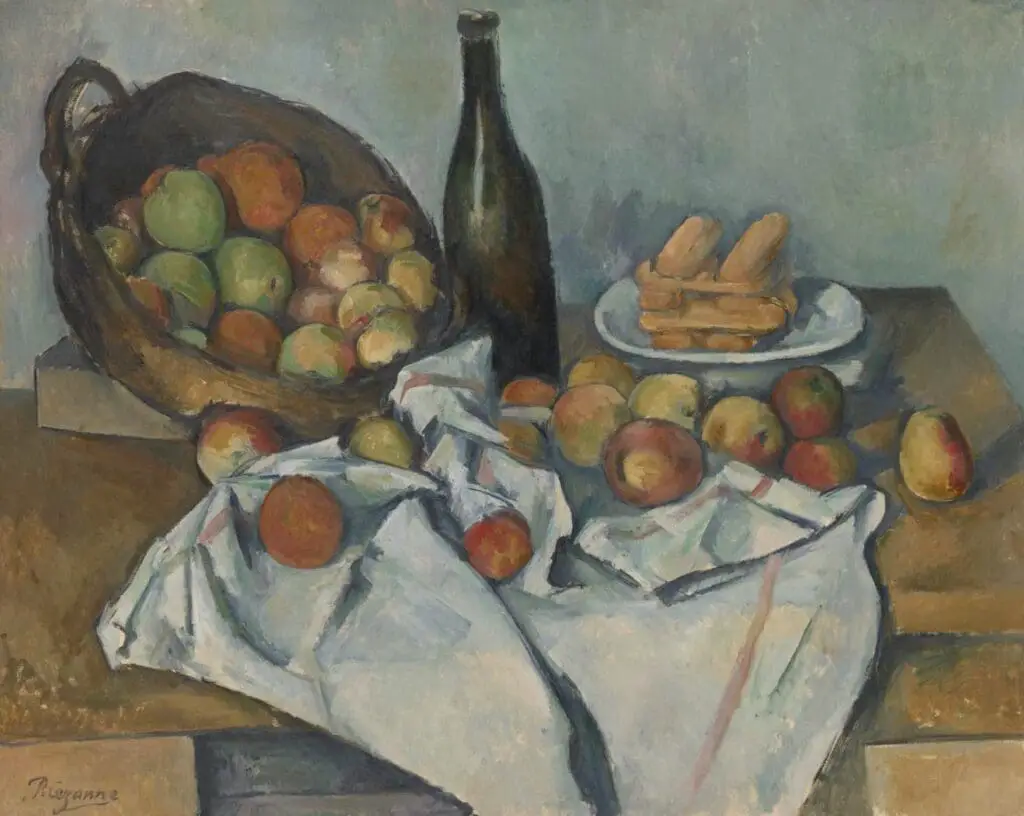
A masterpiece that plays with perspective. The table seems to tilt; the objects are scattered, yet the chaos has a cohesive beauty.
The Peppermint Bottle (1893-1895)
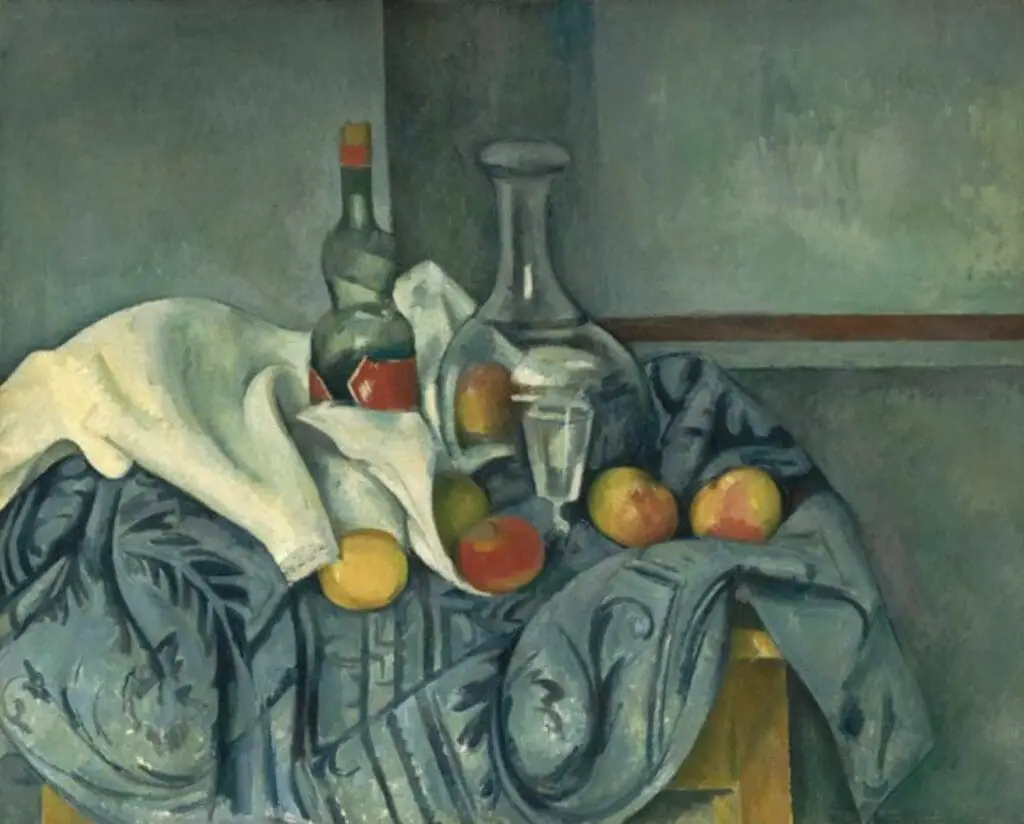
The titular bottle takes center stage here, but the surrounding drapery and fruits contribute to its volume and position in space.
Apples and Oranges (1895-1900)
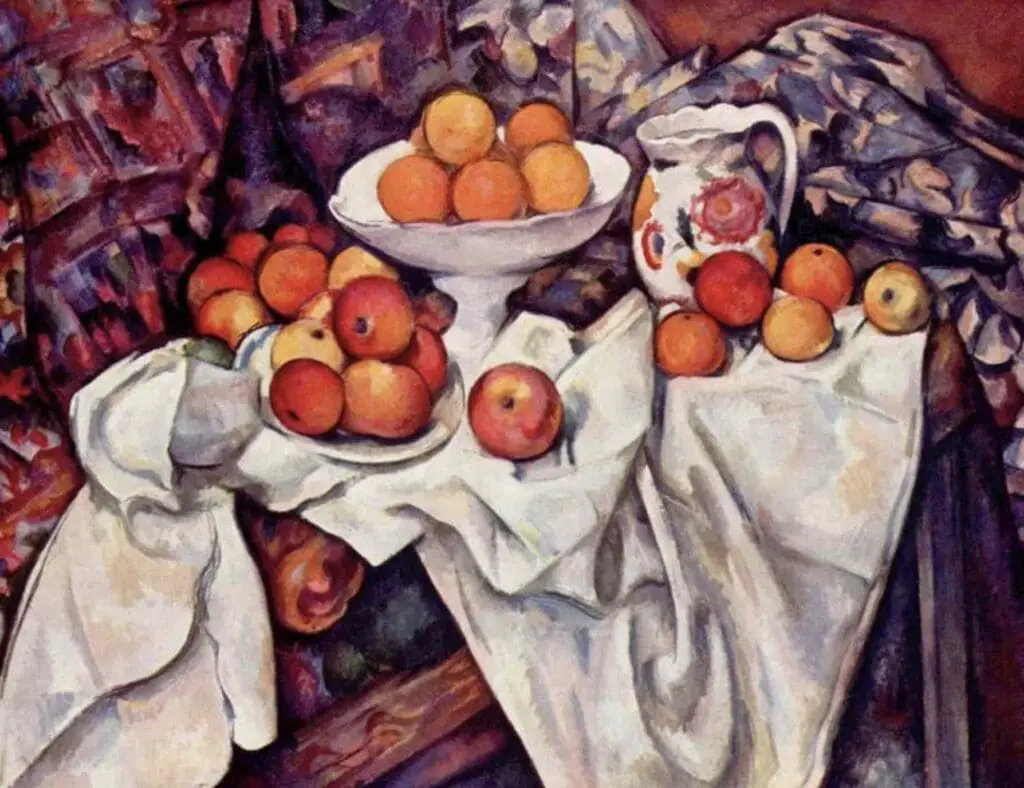
With a messy perspective, this painting deeply explores color juxtapositions.
Still Life with Red Onions (1895-1900)
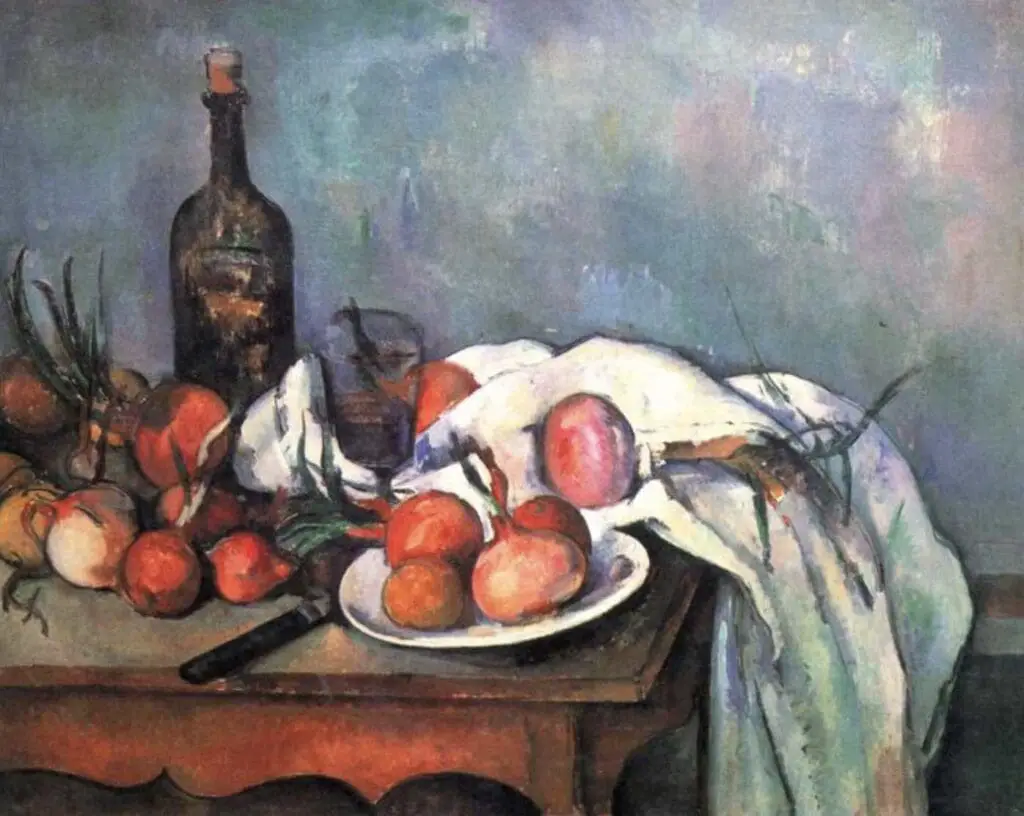
The red onions take center stage in a vivid composition, but the accompanying blue drapery steals the viewer’s attention with its rich contrast.
Still Life with Water Jug (1892-1893)
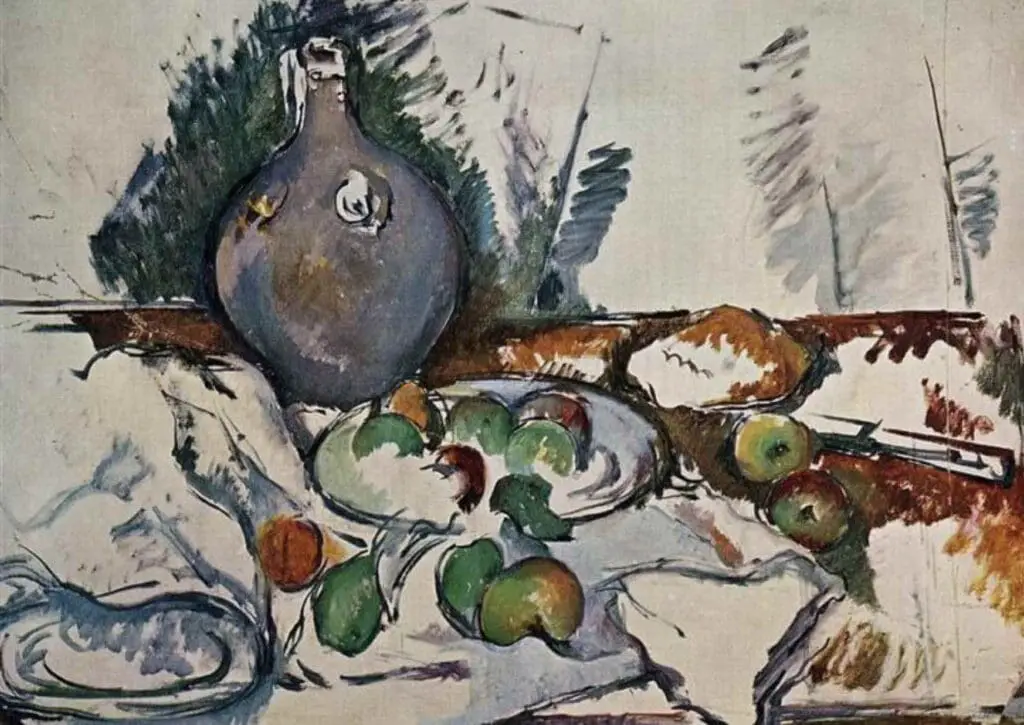
This artwork captures the essence of everyday items but forces the viewer to see the beauty and form within the mundane.
Still Life with Skull (1895-1900)

A more somber work, the skull is a reminder of mortality. Yet, the fruits around it signify life and the transient nature of existence.
Curtain, Jug, and Fruit (1894)
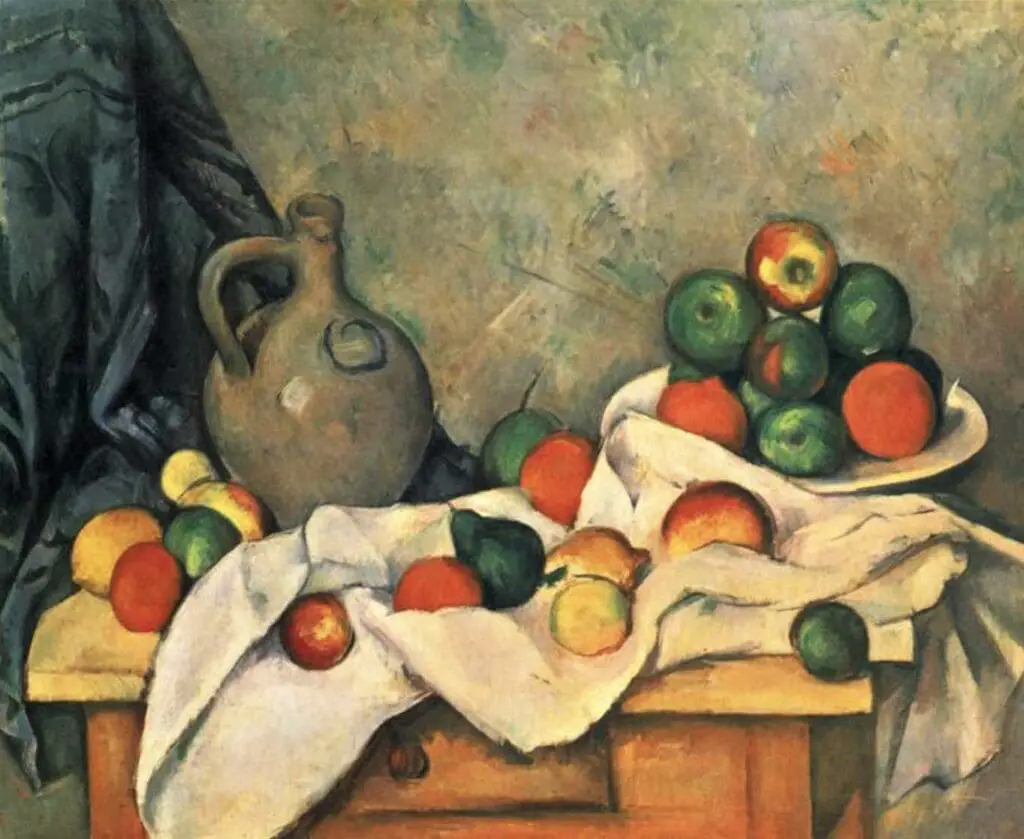
This painting showcases Cézanne’s expertise in capturing the texture of different materials, from the soft curtain to the shiny jug and the tactile fruits.
The Plate of Apples (1877)
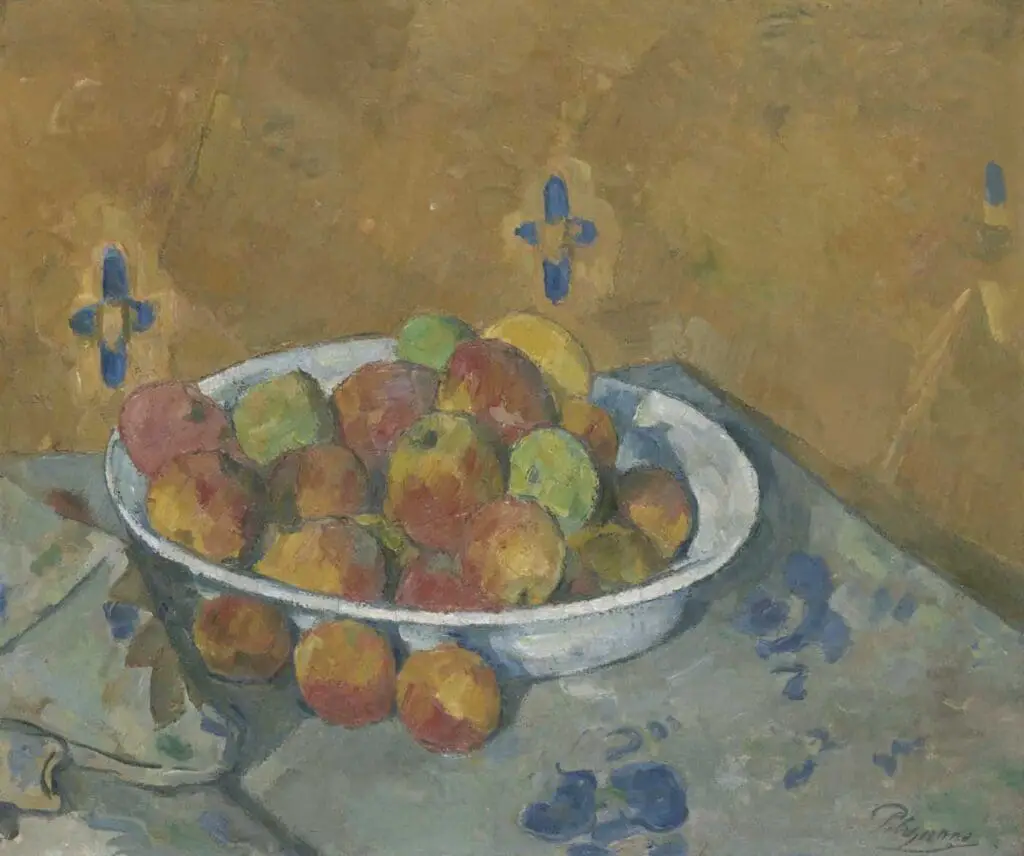
An earlier work, this painting is more than just a plate of apples. It’s a study of color, shadow, and reflection.
Still Life with Plaster Cupid (1894)

Mixing the animate with the inanimate, the plaster cupid brings a sense of movement to a generally static setup.
Still Life with a Ginger Jar and Eggplants (1890 – 1894)
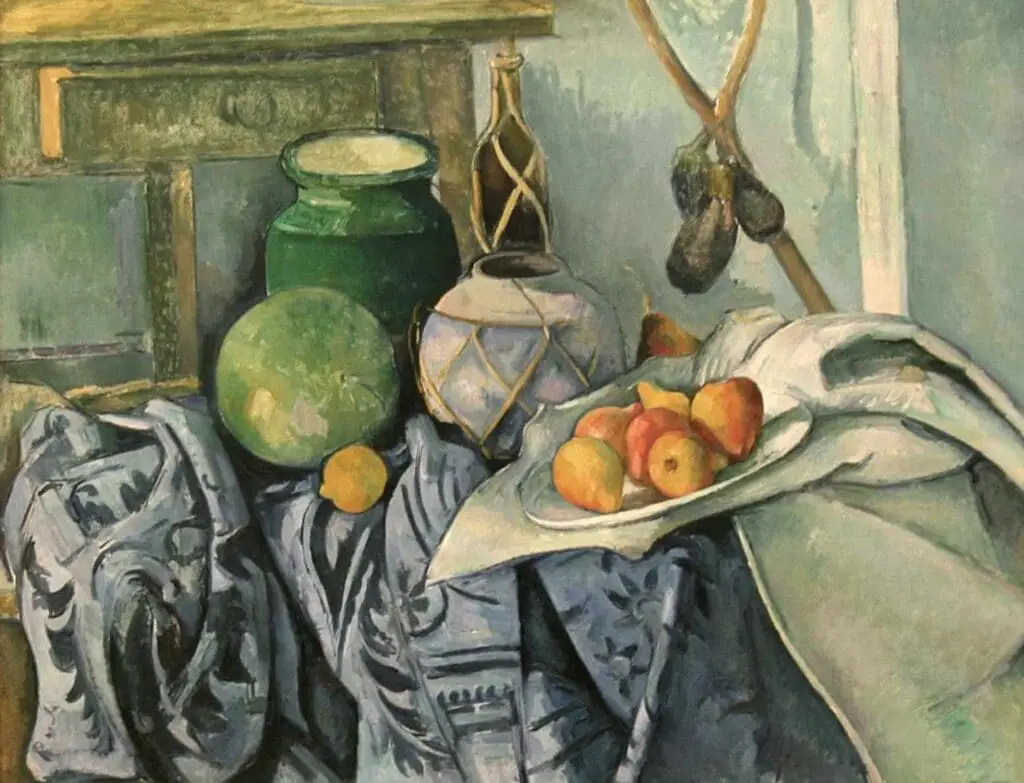
This painting is an intricate dance of color, with the green pot seamlessly merging and standing amidst the colorful fruits.
Still Life with Fruit Basket (1888-1890)
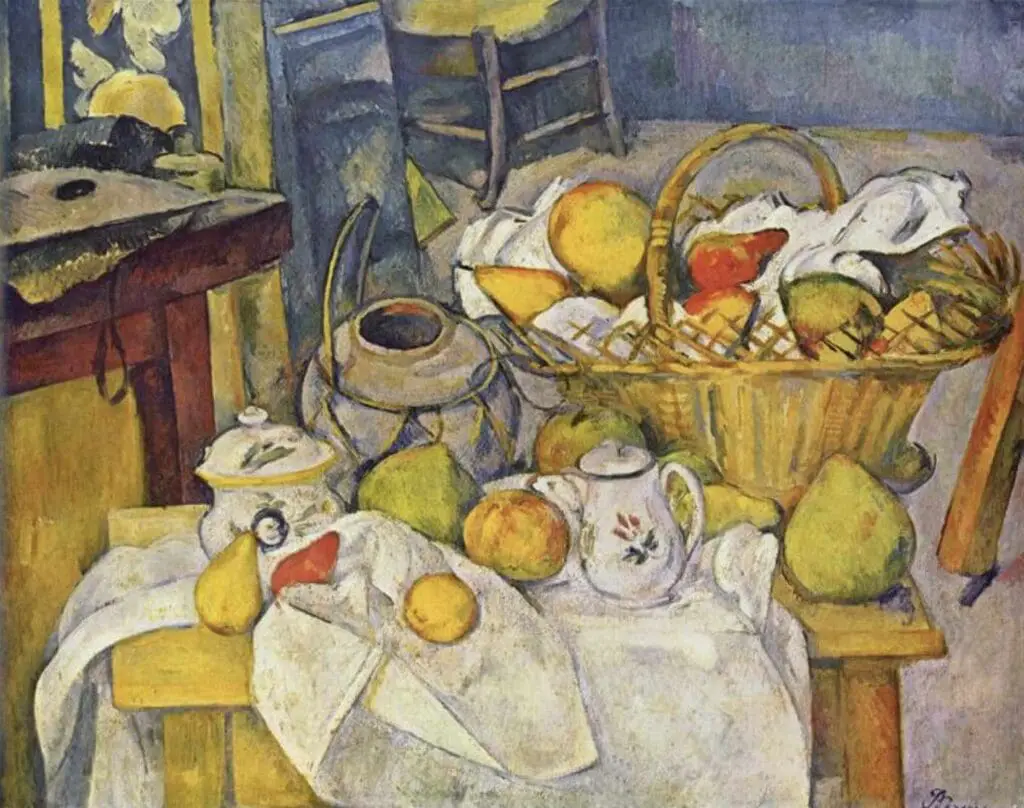
Cézanne’s fascination with depth and form is evident here, as he brings certain fruits forward while pushing others back using just color.
Paul Cézanne’s still life paintings are more than mere representations of objects. They are intense studies of form, color, and the act of seeing.
Through these paintings, Cézanne challenged conventional ideas of perspective, depth, and the very act of painting. His innovations in still life cemented his legacy in art history. They paved the way for subsequent art movements like Cubism, paving the way for artists like Picasso to push the boundaries of visual representation.
Cézanne taught the world to see the ordinary in extraordinary ways through still life.
Anita Louise Art is dedicated to art education, great artists, and inspiring others to find and create their art. We love art that uplifts and inspires. #ArtToMakeYouSmile! #ArtToMakeYouHappy!
If you are interested to see any of my art, you can find out more by clicking here. If you are interested in what inspires me and my paintings, you can discover more by clicking here.
We have a free newsletter and would love you to be part of our community; you can subscribe to the newsletter by clicking here. I would be happy to talk to you if you have any questions. You can reach me, Anita, by clicking here.
Subscribe to our Anita Louise Art YouTube Channel filled with great videos and information by clicking here.
Join us for our podcast “5 Minutes With Art.” Spend 5 minutes a week with us to discover and learn about great art and artists. You can find out more about our podcast by clicking here.
Frequently Asked Questions
What makes Paul Cézanne a pioneer of modern art?
Paul Cézanne is considered a pioneer of modern art for his innovative approach to form and composition. He bridged the gap between Impressionism and Cubism, introducing new perspectives and a focus on geometric shapes that greatly influenced later art movements.
How did Paul Cézanne contribute to the post-Impressionist movement?
Cézanne’s contribution to the post-Impressionist movement lies in his departure from traditional representation. He moved away from realistic depictions, instead emphasizing the underlying structure of objects through his unique use of color, brushstrokes, and geometric shapes.
Why did Cézanne choose still life as a significant subject in his body of work?
Cézanne’s fascination with still life allowed him to explore the fundamental elements of art—shape, color, and composition. Through still life, he could experiment with these elements and delve into the essence of visual perception.
What distinguishes Cézanne’s still life paintings from traditional representations of objects?
Unlike traditional still life paintings, Cézanne’s works go beyond mere representation. He deconstructed objects into basic geometric forms, creating a unique visual language that emphasized the underlying structure and relationships between elements.
Can you name some of Cézanne’s iconic still life paintings and describe their significance?
Some iconic still life paintings by Cézanne include “The Basket of Apples,” “Still Life with Skull,” and “The Card Players.” These works showcase his mastery in capturing the essence of objects while experimenting with composition and color.
How did Cézanne’s exploration of shape and form influence later art movements?
Cézanne’s emphasis on geometric shapes and the underlying structure of objects laid the groundwork for Cubism. Artists like Pablo Picasso and Georges Braque drew inspiration from Cézanne’s approach, leading to the development of this influential 20th-century art movement.
What role did color play in Cézanne’s still life paintings?
Color was a vital element in Cézanne’s still life paintings. He used color not only to represent objects realistically but also to convey emotion and create a sense of unity in his compositions.
How did Cézanne’s still life paintings challenge traditional artistic conventions?
Cézanne challenged traditional conventions by breaking down objects into basic geometric shapes and reimagining the representation of space. His unconventional approach paved the way for a new era in art.
Were there recurring themes or motifs in Cézanne’s still life paintings?
Some recurring themes in Cézanne’s still life paintings include fruit, utensils, and everyday objects. These themes allowed him to explore the interplay of form and color in various contexts.
How do Cézanne’s still life paintings contribute to his overall legacy in art?
Cézanne’s still life paintings showcase his revolutionary approach to art, influencing subsequent movements and artists. His exploration of form, color, and composition in still life solidifies his legacy as a key figure in the development of modern art.
Related Questions
Is There Any Painting Of The Young Leonardo da Vinci?
There is a painting by Giovanni Cariani (c. 1490-1547) at the National Gallery of Art, Washington DC, called Portrait of Man With a Dog (1520) that some people have said a painting of the younger Leonardo. Leonardo would have already been dead by the time this painting was completed. There is also a little-known artwork called Romanzo di Paolo e Daria by Gaspare Visconti that some feel is making fun of Leonardo da Vinci and his red hair.
By clicking here, you can learn more by reading Is There Any Painting Of The Young Leonardo da Vinci?.
What Inspired Leonardo da Vinci To Paint The Last Supper?
Duke Ludovico Sforza commissioned Leonardo to paint the Last Supper mural. What makes the Last Supper mural so unique is that he painted it at the exact time when Christ told the Apostles during The Last Supper meal that one of them would betray him. Leonardo showed the apostles’ reactions, including Judas, who betrayed Christ.
By clicking here, you can learn more by reading What Inspired Leonardo da Vinci To Paint The Last Supper?
Mona Lisa Painting And The Paris Louvre Museum
The Mona Lisa is one of the key paintings of the Louvre Museum. It is one of the most visited paintings in the world. The Mona Lisa is a painting studied, sung about, written about, and spoken about. There is still a mystery surrounding exactly who the Mona Lisa is and why Leonardo da Vinci painted it. This mystery adds to the allure of the painting.
By clicking here, you can learn more by reading Mona Lisa Painting And The Paris Louvre Museum.

